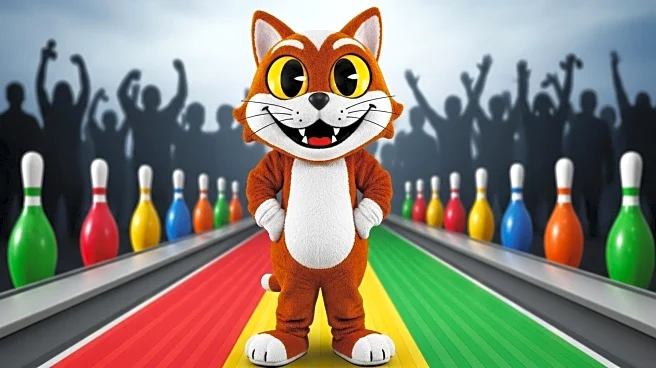What's Happening?
Bowling Green's unofficial mascot, Pudge the cat, has made his debut on ESPN College Football GameDay, capturing the hearts of fans with his charm and antics. Pudge became an iconic member of the Bowling Green football team after senior long snapper George Carlson brought him to the locker room following a preseason camp. Since then, Pudge has become a unifying figure within the team, traveling with them and even having his own security detail. Assistant Athletic Director Taylor Jefferson ensures Pudge is present at games, carrying him in a carrier on the sidelines. Head coach Eddie George acknowledges Pudge's popularity, noting that fans treat him like a rock star, often overshadowing the coach himself.
Why It's Important?
Pudge the cat's presence on ESPN College GameDay highlights the unique and engaging ways sports teams can connect with their fan base. His popularity demonstrates the power of mascots in fostering team spirit and community engagement. For Bowling Green, Pudge serves as a symbol of unity and camaraderie, enhancing the team's identity and fan experience. This phenomenon underscores the broader trend of sports teams leveraging unconventional mascots and figures to build a loyal following, potentially influencing marketing strategies and fan engagement practices across collegiate sports.
What's Next?
As Pudge continues to gain popularity, Bowling Green may explore further opportunities to capitalize on his fame, such as merchandise or special appearances. The team's marketing department could leverage Pudge's appeal to enhance brand visibility and fan engagement. Other sports teams might take note of Bowling Green's success with Pudge, considering similar strategies to boost their own fan interactions. The ongoing attention could also lead to more media features, further solidifying Pudge's status as a beloved mascot.
Beyond the Headlines
Pudge's rise to fame raises interesting questions about the role of mascots in sports culture and their impact on team dynamics. His presence challenges traditional notions of mascots, showing that even unconventional figures can become integral to a team's identity. This development may inspire discussions on the cultural significance of mascots and their ability to transcend typical sports narratives, offering a fresh perspective on fan engagement and community building.












